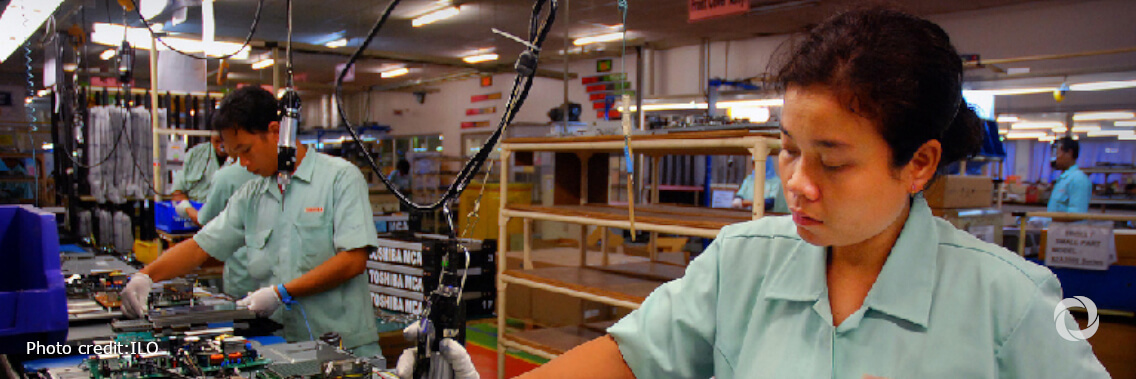With a remarkably high labour market participation rate, women in Vietnam face multiple and persistent labour market inequalities and carry a disproportionate double burden of work and family responsibilities.
A new research brief by the International Labour Organization (ILO) in Vietnam shows that the COVID-19 pandemic has not only exacerbated existing inequalities but also created new gender gaps.
More than 70 percent of Vietnam’s working-age women are in the labour force, compared to the global level of 47.2 percent and an average of 43.9 percent in Asia and the Pacific.
While the gender gap in labour force participation is narrower in Vietnam than in the world, it has still stood at 9.5 percentage points (men’s rate higher than women’s) over the last decade. According to the research brief Gender and the labour market in Vietnam: An analysis based on the Labour Force Survey, uneven distribution of family responsibilities in Vietnam’s society could be the reason behind. Nearly half of the women who were not economically active in the 2018 Labour Force Survey had made this choice because of “personal or family-related reasons”, compared to only 18.9 percent of inactive men.
The research also indicated that the high labour force participation of women in Vietnam should not be interpreted as an indicator of equal opportunity.
“Before the COVID-19 pandemic, both women and men had a relatively easy access to jobs, but the quality of such jobs was on average lower among women than among men,” said Valentina Barcucci, ILO Vietnam Labour Economist, lead author of the research.
Female workers were overrepresented in vulnerable employment, particularly in contributing to family work. They earned less than men (by 13.7 percent on monthly wages in 2019), despite comparable working hours and the progressive elimination of gender gaps in educational attainment.
Women were also underrepresented in decision-making jobs. They accounted for nearly half of the labour force, but less than one-fourth of overall management roles.
“Again the gap women face in job quality and career development stems from the double burden they carry,” said Barcucci. “They spend twice as many hours on household work than men.”
Women spent an average of 20.2 hours per week cleaning the house, washing clothes, cooking, and shopping for the family, family care, and childcare, whereas men spent only 10.7 hours. Close to one-fifth of men did not spend any time on these activities at all.
COVID-19 impacts from a gender perspective
As a result of the pandemic, total working hours dropped significantly in the second quarter of 2020 and recovered through the second half of the year. Women faced the most severe losses.
The total weekly hours worked by women in the second quarter of 2020 were only 88.8 percent of the total for the fourth quarter of 2019, compared to 91.2 percent for men.
However, women’s working hours recovered faster. In the last three months of 2020, women worked 0.8 percent more hours than in the same period of 2019, whereas men worked 0.6 percent more.
“Those employed women who worked longer hours than usual in the second half of 2020 possibly wanted to make up for the income losses in the second quarter,” said Barcucci. “Such additional hours made the double burden heavier to carry, as the time spent by women on household chores remained disproportionately high.”
The impact of COVID-19 on Vietnam’s labour market has not only widened existing inequalities but also created new ones. Before the pandemic, there was no difference between the male and female unemployment rate, but a gap appeared from the third quarter of 2020.

